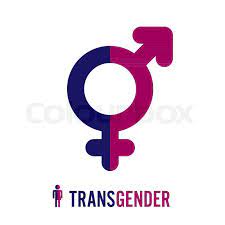For many individuals undergoing male-to-female (MTF) transition, the journey toward achieving physical femininity is a deeply personal one. Among the most noticeable changes that occur during this process is the development of breast buds. Understanding what to expect, how breast development occurs, and how to navigate this transformative experience can greatly enhance one’s transition. In this article, we’ll explore various aspects of MTF breast buds, from the science behind their development to the myths that often surround them.
Understanding MTF Breast Buds: What to Expect Early On
MTF breast buds typically begin to develop during the early stages of hormone replacement therapy (HRT). For many individuals, this process can start just a few months after beginning hormone treatment. During this time, one can expect to feel tenderness or sensitivity in the chest area, as the body begins to respond to estrogen and other hormones. Initially, the buds may feel like small, firm lumps under the nipple area, and the overall shape of the breast may not yet reflect any significant changes.Estrogen Tablets Name
As the months progress, you may notice the breast buds enlarging and becoming more pronounced. This is a natural part of the development process, and it’s essential to remember that everyone’s body responds differently to HRT. Some may experience rapid changes, while others may see slower progress. Patience is key during this period, and it’s important to maintain realistic expectations about the timelines and outcomes of breast development.
The Science Behind Breast Development in Trans Women
The primary driver of breast development in trans women is the administration of estrogen, often in conjunction with anti-androgens. Estrogen stimulates the growth of breast tissue, prompting the development of ducts and lobules—key components of female breast anatomy. Additionally, progesterone may be introduced to promote further growth and development, particularly in the later stages of breast formation. This hormonal interplay mimics the natural processes that occur during puberty in cisgender women.
Breast tissue development is largely influenced by the stages of puberty and genetics. Trans women typically experience breast growth that can be compared to the early stages of female puberty, where breast buds begin to form, followed by further maturation. The timing, intensity, and overall results can vary widely between individuals due to various factors, including genetics, age, and overall health. Understanding the biological mechanisms at play can provide insight and support as one navigates this significant transformation.
Common Myths About MTF Breast Buds You Should Ignore
One prevalent myth surrounding MTF breast buds is that all trans women will achieve a full and ample breast size through HRT alone. While many individuals will see significant breast development, not everyone will attain the same size or shape due to individual differences in anatomy and genetics. It’s essential to have realistic expectations and to embrace the unique changes that your body undergoes.
Another common misconception is that breast buds will develop uniformly or symmetrically. In reality, it’s perfectly normal for one breast to develop at a different rate or size than the other. This asymmetry can be a source of concern for some, but it’s crucial to remember that minor differences are common among all women, cisgender or transgender. Embracing the uniqueness of your development journey can foster a positive mindset throughout the process.
How Hormone Therapy Influences Breast Bud Growth
Hormone replacement therapy (HRT) is the cornerstone of breast development for trans women. Estrogen, the primary hormone used in MTF HRT, promotes the growth of breast tissue and facilitates changes in fat distribution. Anti-androgens help reduce testosterone levels, allowing estrogen to work more effectively in stimulating breast development. The dosage and type of hormones used can greatly influence the speed and extent of breast bud growth.
The effects of HRT on breast development typically unfold in stages. Initially, one may notice increased sensitivity and tenderness around the nipple area, followed by the formation of breast buds. Over time, with continued hormone use, the buds may grow in size, and additional fat may begin to accumulate in the breast area. This gradual process is a direct reflection of the hormonal changes occurring within the body, and it highlights the importance of adhering to a prescribed HRT regimen for optimal results.
Tips for Managing Discomfort During Breast Development
As breast buds begin to form, some individuals may experience discomfort or tenderness in the chest area. This is a normal part of the development process. To manage this discomfort, consider wearing a supportive bra that provides gentle compression. A well-fitted bra can help alleviate sensitivity and provide a sense of comfort as your body undergoes changes.
Additionally, over-the-counter pain relief medications can be effective in managing any soreness. Applying a warm compress or taking warm baths may also help soothe discomfort. Remember that this is a temporary phase, and as your body continues to adjust to the hormonal changes, sensitivity often diminishes. Staying attuned to your body’s signals and caring for your emotional well-being during this time is equally important in navigating the transition.
The Role of Genetics in MTF Breast Size and Shape
Genetics plays a significant role in determining breast size and shape. Just as in cisgender women, factors such as family history, body type, and ethnic background can influence how breast tissue develops in trans women. Therefore, it’s essential to understand that while HRT will initiate physical changes, the final results can vary widely based on individual genetic makeup.
Many trans women may find themselves comparing their breast development to others, but it’s crucial to remember that everyone’s journey is unique. Instead of focusing on how your breasts compare to someone else’s, embrace the changes your body is making. Understanding the role of genetics can help you cultivate a sense of acceptance and appreciation for your own body during its transformation.
When to Seek Help: Signs of Unusual Breast Changes
While breast development is a natural part of the MTF transition, there are certain signs that may indicate a need for medical attention. If you notice significant pain, lumps that feel hard or irregular, or any sudden changes in size, it’s essential to consult with a healthcare provider. These symptoms could be indicative of an underlying condition that may require further assessment.
Additionally, experiencing extreme asymmetry or sudden changes after an extended period of stable development may warrant a discussion with your healthcare provider. Being proactive about your health and addressing any concerns early on can help ensure that your transition remains a healthy and positive experience. Don’t hesitate to seek support from professionals who understand your journey and can provide guidance tailored to your needs.
Celebrating Your Journey: Embracing MTF Breast Growth
Breast development is often seen as a significant milestone in the journey of transitioning, and it’s important to embrace and celebrate this aspect of your transformation. Each stage of growth represents progress and a step closer to aligning your physical appearance with your gender identity. Finding joy in the process, no matter how long it takes, can foster a more positive self-image and enhance your overall well-being.
Consider documenting your journey—take photos, keep a journal, or share your experiences with supportive friends or online communities. Celebrating the changes, both big and small, can help you appreciate the uniqueness of your transition. Remember that your experience is valid, and embracing the growth of your breast buds is just one part of the beautiful journey toward self-acceptance and love.
The experience of developing MTF breast buds is a significant and often exciting stage in the transition process. By understanding the science behind breast development, challenging common myths, and celebrating individual journeys, trans women can navigate this transformative phase with confidence and grace. Whether it’s managing discomfort, embracing unique changes, or seeking support when needed, remember that this journey is yours to own, and every step is worthy of celebration.


